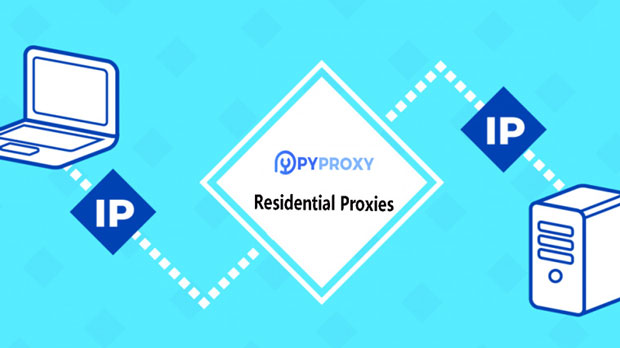How to compare prices and services of different SOCKS5 proxy providers?
When choosing a socks5 proxy provider, it's essential to consider both price and service quality to ensure you're getting the best value for your needs. socks5 proxies are widely used for privacy, security, and performance enhancements in various online activities. However, with numerous providers offering these services, it can be difficult to determine which one is the most suitable. In this article, we will break down the key factors to consider when comparing different SOCKS5 proxy services, focusing on price, reliability, speed, security, customer support, and other features that contribute to overall service quality. 1. Understanding the Basics of SOCKS5 ProxiesBefore diving into comparisons, it’s important to understand what a SOCKS5 proxy is and how it works. SOCKS5 is a type of internet protocol that facilitates the routing of network traffic between a user and a server through a proxy. Unlike other proxy protocols like HTTP or HTTPS, SOCKS5 handles all types of internet traffic, including HTTP, FTP, and even peer-to-peer (P2P) traffic, making it more versatile. This flexibility makes SOCKS5 proxies suitable for a wide range of applications, such as web browsing, gaming, and torrenting.When comparing SOCKS5 proxies, you should look for providers that offer high anonymity, faster speeds, and a secure, stable connection. These attributes are crucial when making your selection, as they directly influence your online experience.2. Price: A Crucial Comparison FactorThe price of SOCKS5 proxy services can vary significantly from one provider to another. It's essential to understand that cheaper options may not always offer the best value, while expensive services do not always guarantee the highest quality. Here are some key points to keep in mind when comparing prices:2.1. Pricing StructureSOCKS5 proxy providers typically offer different pricing models, such as pay-as-you-go, monthly subscriptions, or long-term plans. Monthly subscriptions often provide better discounts, but they require a commitment, while pay-as-you-go plans offer more flexibility without long-term obligations. It's important to assess your usage needs—if you plan to use the proxy service regularly, a monthly subscription might be more cost-effective. However, for intermittent use, a pay-as-you-go plan may be more suitable.2.2. Discounts and PromotionsSome SOCKS5 proxy providers offer promotional discounts or bulk pricing for long-term commitments. These promotions can significantly reduce the overall cost. However, always read the terms carefully to ensure that these discounts do not come with hidden restrictions or limitations. 2.3. Cost vs. FeaturesWhile comparing prices, it's vital to weigh the cost against the features provided. A lower-priced service may save money initially, but it might offer limited server locations, slower speeds, or poor customer support. Conversely, a higher-priced service may include additional features such as more IP addresses, faster connection speeds, or higher levels of encryption.3. Speed and ReliabilitySpeed is one of the most critical factors when selecting a SOCKS5 proxy. A slow connection can impact your browsing experience, especially when streaming content or downloading large files. Here are some aspects to consider regarding speed and reliability:3.1. Server LocationsThe number of server locations offered by a provider can significantly affect the speed and performance of your connection. More server locations usually mean a better chance of finding a nearby server that will give you faster speeds. When comparing providers, check whether the servers are located in regions that match your needs (e.g., if you want to access content from a particular country).3.2. Connection StabilityReliability goes hand-in-hand with speed. A service with high uptime ensures that your proxy connection remains stable without interruptions. Look for providers that offer 99% or higher uptime, as frequent downtimes can be frustrating and disruptive to your activities.4. Security and PrivacySecurity and privacy are two essential considerations when selecting a SOCKS5 proxy. Since SOCKS5 proxies do not inherently encrypt traffic, many providers offer additional security features. Here's what to look for in terms of security:4.1. EncryptionAlthough SOCKS5 proxies do not provide built-in encryption, some providers offer enhanced security features, such as SSL/TLS encryption. These features help secure your internet connection and prevent third parties from snooping on your data. It’s important to check whether the provider offers this optional encryption and whether it is enabled by default.4.2. No-Logs PolicyA no-logs policy is crucial for maintaining privacy. This means the provider does not store logs of your online activities, reducing the risk of data being handed over to authorities or third parties. Always verify that the provider has a strict no-logs policy and review their privacy policy for clarity on data handling practices.4.3. Authentication MethodsSome SOCKS5 proxy services support additional authentication mechanisms, such as IP whitelisting or username/password combinations. These methods can add extra layers of security to your connection, ensuring that only authorized users can access the service.5. Customer SupportResponsive customer support is crucial when it comes to any type of internet service. Whether you're experiencing technical issues or need help with account management, good customer support can make all the difference. Here’s how to evaluate support quality:5.1. Availability and Response TimeCheck whether the provider offers 24/7 customer support and how quickly they respond to inquiries. A provider with fast and efficient customer service can resolve issues promptly, preventing unnecessary downtime.5.2. Support ChannelsLook at the various ways you can contact the support team. Ideally, a provider should offer multiple channels such as live chat, email, and a comprehensive knowledge base. Live chat is particularly beneficial for immediate issues, while email support is useful for less time-sensitive matters.6. Compatibility with Applications and DevicesAnother critical aspect when selecting a SOCKS5 proxy service is its compatibility with various applications and devices. For instance, some proxy services are optimized for specific software, such as browsers, torrents, or gaming platforms. Make sure the proxy service is compatible with the apps or devices you intend to use it with, and check whether they provide detailed guides for configuration.7. Trial Periods and Money-Back GuaranteesMost reputable SOCKS5 proxy providers offer trial periods or money-back guarantees. These allow you to test the service risk-free before making a long-term commitment. A trial period helps assess the performance, speed, and reliability of the service, while a money-back guarantee ensures that if the service doesn't meet expectations, you can get your money back.8. ConclusionComparing different SOCKS5 proxy providers requires a careful evaluation of several factors, including pricing, speed, security, customer support, and compatibility. By considering these elements in-depth, you can make a more informed decision about which provider best suits your needs. Remember that while price is important, it should not be the sole deciding factor. Quality of service, security features, and customer support should also play significant roles in your final decision. Always ensure that the provider you choose offers the best balance of these factors for a reliable and secure online experience.
2025-01-09
























































